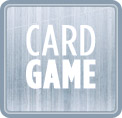Vol2 Updates 06 Jul 2011 10:30 pm by Matt
How to finish your story in one week or less
This post is not for everybody. For instance, this post is not for those of you who are finished or just about finished with your Machine of Death stories. You guys are doing fine. And this post is not for those of you who have yet to start or who have barely started. You guys should go read David’s post from a couple days ago.
No, this post is specifically for those of you who have about half of a story and about one week to finish it. It’s for those of you who are feeling increasingly panicked as the deadline ticks ever closer. It’s for those of you who are saying to yourselves, I’m almost out of time! What the heck should I do now???
First thing first: DON’T GIVE UP THE SHIP. We want to read your story. In order for that to happen, we need to have it by midnight on July 15. And we have faith in you. We know you can do this. But here are some thoughts that might help point you in the right direction.
1. Figure out what the pay-off scene is.
Just about every short story has a pay-off — some thrilling climactic moment that the characters are working towards and the reader is reading towards. This is the engine that’s been pulling your story along so far. If you don’t already know what the pay-off in your story is, figure it out. Sit down and ask yourself, If I were reading this story, what’s the one thing I’d be most interested in seeing?
Here are some examples of pay-offs: the big gunfight, the tearful reconciliation, the unmasking of the killer, the championship game, the arrival of the hurricane, the battle of the monsters, the revelation of an old secret, the sinking of the ship, the expression of true love. Whatever your pay-off scene is, it’s probably the one that you’ve been wanting to write this entire time.
2. Now that you know what the pay-off is… Write it immediately!
This is not advice that I would give to everybody in every situation. This is advice that I am giving to you, o time-crunched writer, in this particular circumstance. With one week left and with everything else going on in your life, you probably don’t have time to write the entire story you wanted to write. Something will get short shrift.
So why write the pay-off scene first? To make sure that this scene — the most important scene in your entire story — isn’t the one that gets shafted. It doesn’t matter how wonderful the rest of your story is… If the ending feels rushed, forced, and underdeveloped, readers are going to come away disappointed. Much better to gloss over some of the stuff in the middle but still deliver the boffo pay-off you’ve been picturing in your head for the past nine weeks.
3. Plot out the shortest possible route to connect the beginning with the pay-off.
Now you’ve got two disconnected sections with a big hole in the middle that needs to be filled in. Sit down and ask yourself, How much of this hole really needs to be filled in? Sure, you had big plans for subplots and symbolism and backstories and descriptions. But we’re in emergency mode now. Our job is to connect A to Z as quickly as possible — with a couple of caveats.
Don’t leave out important plot points. You still need to tell a proper story that makes sense. Don’t summarize vast sections of ancillary events that you’d intended to write as scenes. At this point, it’s better to leave subplots as loose threads than it is to spend pages explaining how you would have resolved them if you’d had the time. Better yet — cut out the threads entirely if you can, even if that means deleting stuff you’ve already written.
It might feel like you’re going backwards when you delete parts of your story, but you’re not writing towards a word count. You’re writing towards your pay-off, and anything that distracts you from that should be mercilessly jettisoned.
4. Once you’ve come up with the shortest possible route — slash it even further.
Maybe we need to know that your character left a duplicate copy of the microfiche with a friend in Philadelphia for the pay-off of your story to make sense. But does that need to be a scene? It probably only needs to be a sentence. And maybe you were planning to write a detailed first-hand description of the fish market in Seattle in the lead-up to your climax. If that’s so, then skip it.
If you had more than a week to finish your story, it would be fun to play around with these things to see what they add to your story. But this is the time to focus on lean, stripped-down storytelling. You need to get your characters and readers to the pay-off with the suspension of disbelief still intact — but you very well may find that a lot of what goes on in the middles of stories is strictly optional. Don’t be afraid to leave something out of the middle if it’s not driving the plot forward.
5. Go back through your story one more time and rip out any loose threads you can.
If you started writing a bigger, more expansive story, it’s going to feel a little strange if it suddenly flips to a fast-paced race to the climax halfway through. You may need to go back through your story and smooth over those rough edges. It’s fine to have some loose ends in a story — but if there’s any glaring unresolved subplot, it’s probably best to nuke it.
Luckily, it’s a lot faster and easier to delete two pages than it is to write them. But you’ll need to be ruthless. There will be endless tempatations to rewrite sections of your story as you edit and prune. That’s fine — so long as you’ve finished the first draft. Save this part for last so you don’t get bogged down in rewriting while there are still huge chunks of your story missing.
Remember: This is not advice for everybody to use on all stories all the time. Most writers have their own methodology that they’re comfortable with. If you’ve got one that works for you, stick with it. But if your normal method isn’t optimized for emergency action with a deadline marching steadily closer, some new tactics may temporarily be in order.











